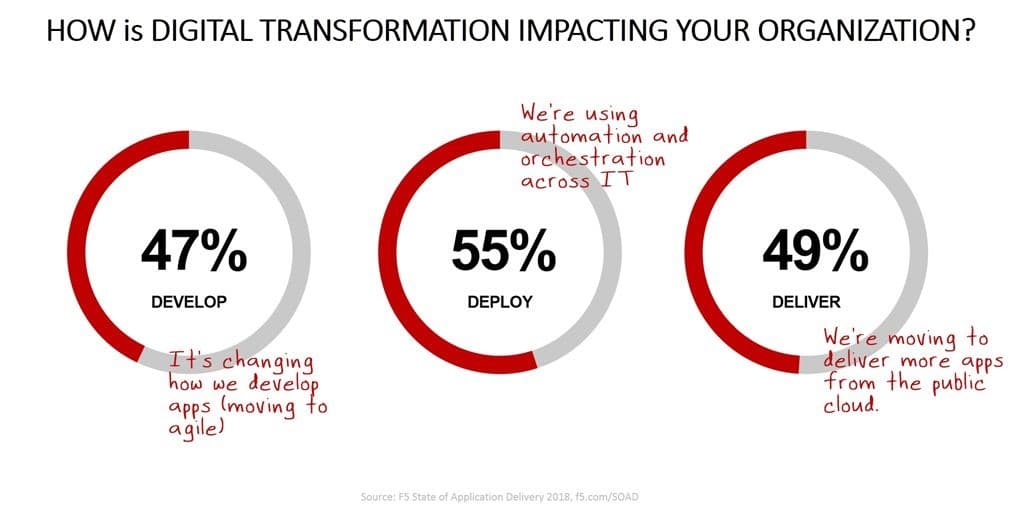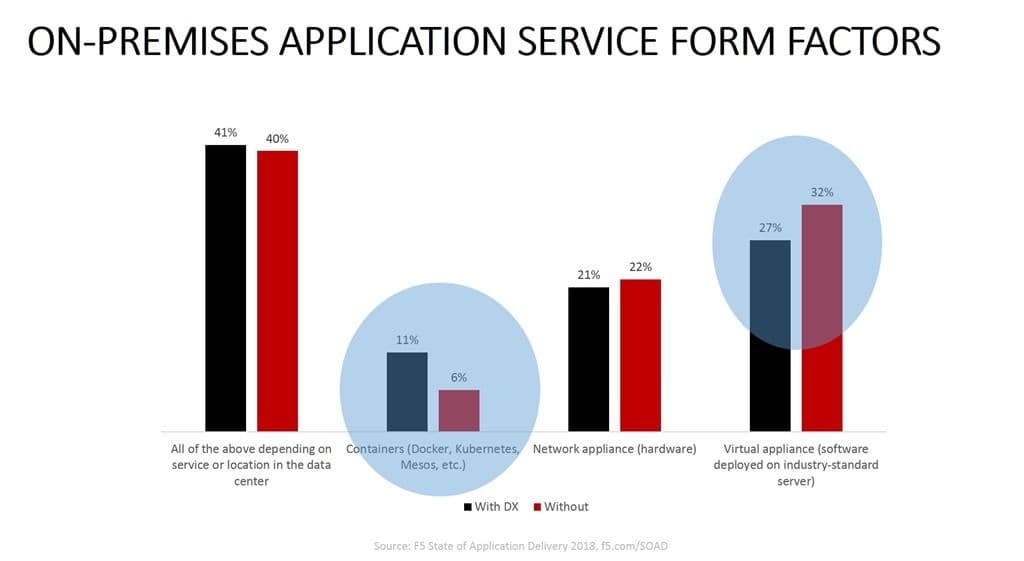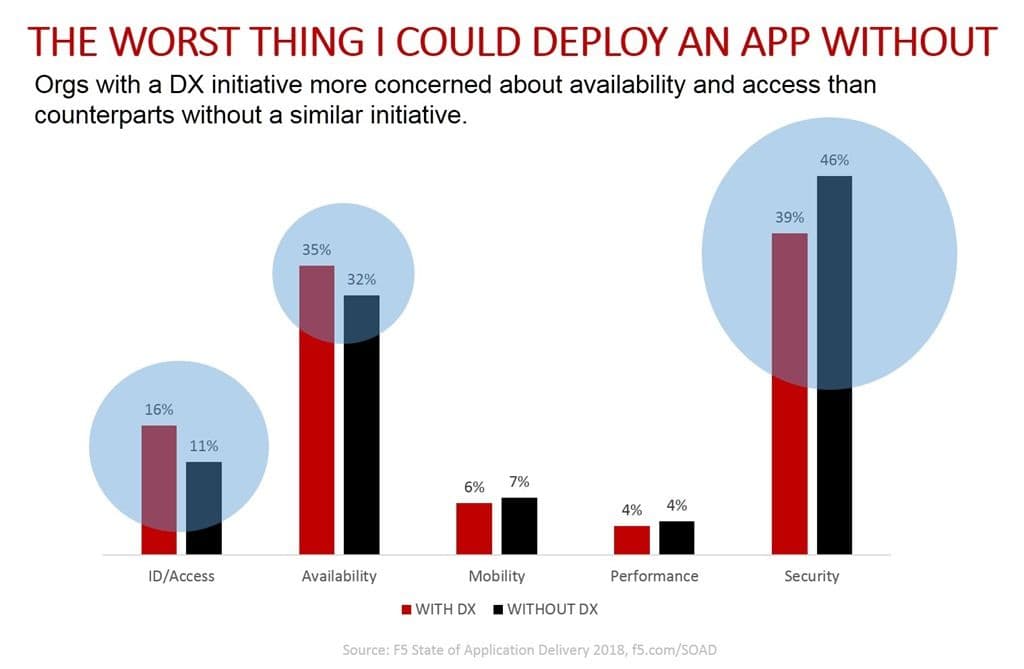Digital transformation (DX) is a slippery term to define. As with cloud years ago and more recently, DevOps, the term is treated like silly putty in the hands of whomever uses it. If you’re trying to sell an API-related product, DX is about API-enabling your business. If you’re trying to sell mobile app development, it’s about mobile apps. It’s paperless! It’s applications! It’s cloud!
It’s actually all those things and none of them. At the same time. Yes, DX has supplanted DevOps as Schrödinger's trend.
The best (and simplest) definition of digital transformation – the one that encompasses all its various forms and manifestations – is digital enablement. That might be of processes (paperless) or services (APIs) or engagement (mobile/apps). It might be all three. The defining aspect of digital transformation is that it enables business to move with greater alacrity and to scale with less effort thanks to a bevy of technologies that includes automation, cloud, and applications.
Notice that this definition and its associated technologies does not confine itself to the business side of things. That’s by design, because DX is as much about internal digital enablement as it is external. In fact one could argue (and I have) that you cannot have the latter without the former. Unless you've transformed your internal operations into a lean, automated, cloud-ready machine, you won’t be able to execute successfully on external efforts. IT must be transformed and ready to support more applications, more application services, and more cloud environments. All without significantly increasing headcount – and budgets. Operational scale is critical to achieving success, because without it you don’t have the resources or ability to scale the business (the apps and APIs) in a digital economy.
Organizations already know this and are acting on it. In our 2018 State of Application Delivery, 72% of the more than 3000 global respondents all told us that IT optimization was the benefit they were hoping to realize from their digital transformation efforts. Competitive advantage came second with 56% of respondents, and business process optimization ran a close third at 49%.
And what are these organizations doing because of DX efforts? They’re employing automation and orchestration across IT. They’re migrating more applications to the public cloud. And they’re changing how they develop applications. Agile is on the table for many orgs that eschewed the approach as too chaotic for their traditional enterprise.

They are also evaluating new technologies and architectures – like containers and microservices – in significant percentages. A not insignificant 41% of respondents indicated they were pursuing technologies darlings du jour.
But it isn’t just the straightforward answers to questions on DX that leads me to make such a bold claim about changes being wrought by such efforts. It’s pervasively obvious throughout the data that those operating under a DX initiative are changing the way they develop, deploy, and deliver applications.
Consider, for example, the impact on application services. More specifically, take a gander at the difference in the form factor preferred for on-premises deployment:

Just as the application is the primary criteria for determining deployment location of applications, the clear preference for application services form factors depends on the service or location. The preference for hardware – and virtual appliances - continues to decline in favor of “it depends.” Containers are also seeing a rise, growing from 4% in 2017 to almost 6% this year. What is striking about the data is the impact DX has on these preferences. Those with a DX initiative were twice as likely to prefer containers as a form-factor for application services versus counterparts without such an initiative – at the expense of virtual machines.
Clearly, digital transformation efforts are impacting all areas of IT – including the traditional network where application services are most commonly deployed.

This influence is not restricted to tangibles. Perspectives on what takes priority – scale, speed, or security – also showed an impact based on digital transformation efforts.
Respondents operating under the auspices of DX were more concerned with availability and ID/access for their applications than counterparts. They were significantly less concerned with security. While still not enough to pull security of the top “worst thing to deploy an application without” spot, it did significantly reduce the growing distance between them.
Digital transformation efforts are happening inside and out. While business shareholders look to force an external digital makeover, it is clear the same kinds of changes are rippling through all of IT.
From development to deployment to delivery, digital transformation changes everything.
For more insights on digital transformation, multi-cloud, application services, security, and the continuing NetOps transformation, feel free to grab your own copy of our 2018 State of Application Delivery report and follow along on the Twitters with @F5Networks and/or the hashtag #SOAD18. And stay tuned – we’ll have more insights (including data and perspectives not in the report) in forthcoming blogs.
About the Author

Related Blog Posts

AppViewX + F5: Automating and orchestrating app delivery
As an F5 ADSP Select partner, AppViewX works with F5 to deliver a centralized orchestration solution to manage app services across distributed environments.

Build a quantum-safe backbone for AI with F5 and NetApp
By deploying F5 and NetApp solutions, enterprises can meet the demands of AI workloads, while preparing for a quantum future.

F5 ADSP Partner Program streamlines adoption of F5 platform
The new F5 ADSP Partner Program creates a dynamic ecosystem that drives growth and success for our partners and customers.
F5 NGINX Gateway Fabric is a certified solution for Red Hat OpenShift
F5 collaborates with Red Hat to deliver a solution that combines the high-performance app delivery of F5 NGINX with Red Hat OpenShift’s enterprise Kubernetes capabilities.
F5 Silverline Mitigates Record-Breaking DDoS Attacks
Malicious attacks are increasing in scale and complexity, threatening to overwhelm and breach the internal resources of businesses globally. Often, these attacks combine high-volume traffic with stealthy, low-and-slow, application-targeted attack techniques, powered by either automated botnets or human-driven tools.
Phishing Attacks Soar 220% During COVID-19 Peak as Cybercriminal Opportunism Intensifies
David Warburton, author of the F5 Labs 2020 Phishing and Fraud Report, describes how fraudsters are adapting to the pandemic and maps out the trends ahead in this video, with summary comments.
